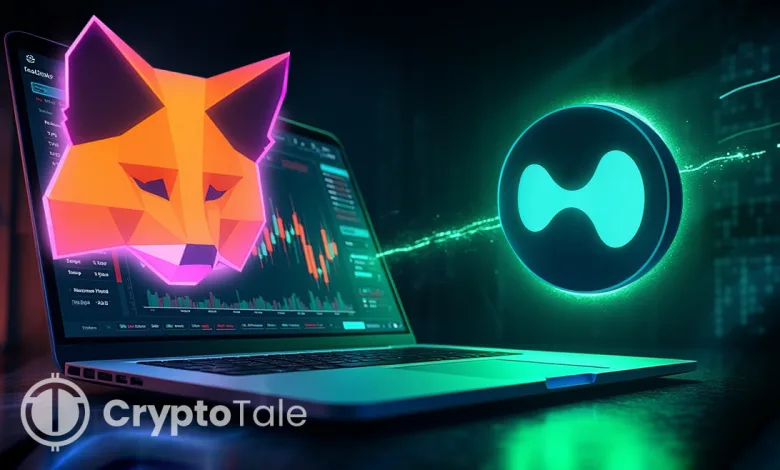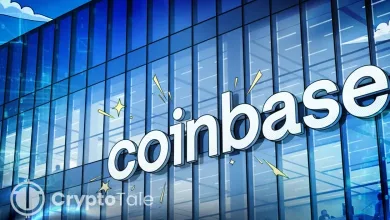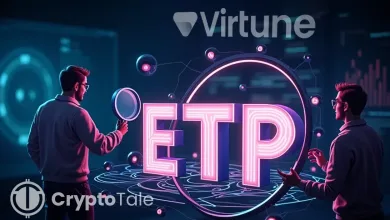MetaMask to Launch MASK Token and Perpetual Futures Trading

- MetaMask adds perpetual trading and MASK token, evolving into a DeFi super-wallet.
- Hyperliquid integration brings high-speed perpetual trading with decentralized security.
- MASK token introduces governance, letting users shape MetaMask while earning incentives.
MetaMask, the self-custodial crypto wallet with over 30 million monthly active users, is preparing a dual transformation. Code updates show perpetual futures trading may soon be integrated through a partnership with Hyperliquid, while Consensys confirmed plans for a native MASK token. Together, these moves push MetaMask beyond wallet functions and toward becoming a full-scale DeFi “super-wallet.”
The GitHub repository reveals a “Perps” trading screen, USDC deposit flow, and live gas fee tracking. Users would be able to fund perpetual accounts, monitor slippage, and confirm trades without leaving the wallet. This integration would replicate centralized exchange speed and convenience but retain decentralized control, reducing the need for third-party platforms.
Hyperliquid Powers MetaMask’s Transformation with High-Speed Perpetuals
The infrastructure created by Hyperliquid powers this step. Its HyperEVM enables it to maintain transparent order books while cranking through over 200,000 orders per second.
The platform reported $398 billion in monthly trading volume and $106 million in revenue for August. According to data from DefiLlama, the sum perpetual volume is around $2.57 trillion, with Hyperliquid commanding almost 70% of the DeFi perpetuals market.
Few decentralized exchanges match Hyperliquid’s throughput. By embedding it directly inside MetaMask, the wallet lowers friction for users seeking derivatives exposure. It signals a shift in usability: a single app for trading, custody, and soon governance. This streamlines access to DeFi markets, which historically required juggling multiple platforms.
MASK Token Marks MetaMask’s Push Toward Governance and DeFi Expansion
The MASK token is the next step in MetaMask’s transformation. Consensys CEO Joseph Lubin confirmed this week that the token is “coming sooner than expected.” This marks the clearest signal yet of its launch, following years of speculation.
Back in 2021, Lubin teased “Wen $MASK?” on X post. The token would serve as a governance and incentive tool, giving users a voice in MetaMask’s future and decentralizing parts of its infrastructure.
A wallet that has derivatives trading and an issuance of its own token is likely to attract the attention of financial regulators. Centralized exchanges are highly regulated for leverage products, and it is a threat that MetaMask could potentially inherit.
MetaMask already has a design that involves users having custody of their assets. Perps and a governance token enhance this structure by reducing reliance on centralized exchanges. Users can get access to more tools within a single decentralized interface, without the same risks of custodianship that have beset their centralized counterparts.
Related: MetaMask Partners with Tron to Enhance Cross-Chain Ecosystem
The company has been steadily expanding its product suite. MetaMask partnered with Mastercard and Baanx to launch a crypto debit card. In August, a proposal introduced MetaMask USD (mmUSD), a stablecoin set to launch on Ethereum and Linea with Stripe’s payment rails. On August 26, a social login feature was launched, which allowed wallet creation and account recovery through Google or Apple credentials without sacrificing self-custody.
MetaMask is framing itself not as a tool, but as an infrastructure layer. With derivatives, its own stablecoin, social login, and debit cards, MASK now makes it an entry point and financial hub for all things Web3.
The turning point is clear. MetaMask is no longer just a bridge to decentralized applications. It is reshaping itself into a comprehensive DeFi platform. The growth is certain, but the open question is how regulators, institutions, and users would respond to a wallet that is rapidly becoming a super-wallet at the heart of Web3.




